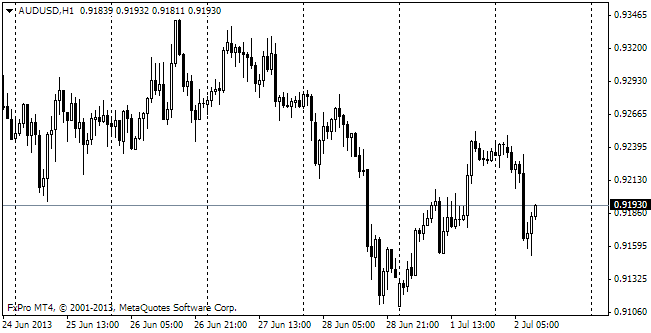EUR/usd
Yesterday eurusd was drifting within a rather narrow trading range in the absence of news. Over the day the pair went down just by 10 pips to 1.3420, though upon the whole bears seemed to be stronger. The thing is that the intraday low was at 1.3408 while the high was near the daily open. In the European news background only the Sentix Investor Confidence is of interest – it was poor due to the increased geopolitical risks in the region (Ukraine, Iraq, Gaza Strip). The rate fell down to the levels reported a year ago, albeit remained positive. It is explained by the fact that the EU economy is showing positive growth rates (for now), which was not seen last year, but still has seriously slowed down since the beginning of the year. A bit later it was reported about producer price growth by 0.1% in June, while it was expected that the index will remain unchanged. Since the prices grew, the annual rate of price reduction slowed down from 1.0% to 0.8%. It is a good leading indicator of consumer price growth in August-September. Yet, it is strongly affected by consumer activity, about which we know very little now. From across the Atlantic we are still getting moderately positive news. The Fed pointed out in its quarterly report that in the opinion of credit experts the recent easing of the mortgage terms was the sharpest one since the beginning of the mortgage crisis. Adding here the ultra-low interest rates, we get a potentiality of a new bubble formation even if the lending standards are not so loyal as before the crisis. For the Fed this easing means an opportunity to stop supporting the market by bond purchases and get down to normalization of the monetary policy. Besides, yesterday the US treasury reported the outlook for borrowing in the third and fourth quarters. According to it borrowing will be the lowest for the recent 7 years and the budget deficit will make just 2.8%. Five years ago it made 9.8%. To Forex it promises a decrease in the dollar-nominated bonds. If the place of the government in the debt markets is not taken by corporations, it will produce a negative effect on the dollar: it will be purchased less eagerly for the sake of investments into the dollar-nominated bonds.
GBP/USD
The strength of the British construction sector, confirmed by the corresponding PMI yesterday, helped to reverse the British currency. July's rate fell from 62.6 down to 62.4 against its expected decline to 62.1. Such small news in the absence of other drivers contributed to formation of a support in the cable. The pair has built a bottom at 1.6810 and bounced off it to 1.6860, where it keeps trading now. Today the sterling is under a bigger threat as there will be a release of the services sector statistics and the share of this sector in GDP is close to 80%.

USD/JPY
The pair has calmed down, consolidating near 102.50. The growth of the US and further of Asian stock indices supported the pair, but the preceding growth combined with certain weakness of the US currency against its Asian counterparts curbs further growth of the pair.

AUD/USD
The Australian trade balance proved to be slightly better than expected with the current deficit of 1.68bln against 2.04 a month ago and the forecasted rate of 2.0bln. The fact that this indicator surpassed the expectations hardly impresses the RBA. The country is still unable to start steady growth against the decrease in investments into the extractive industries. On the other hand, a steep drop of the aussie under such conditions can only expand the trade deficit as commodities will become less available.
